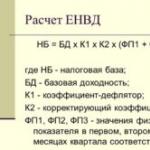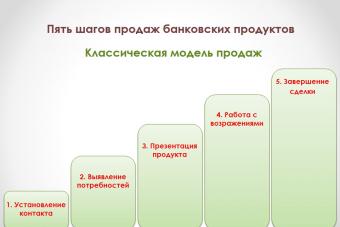Instructions for use of suspension Albendazole for deworming animals
(organization-developer: CJSC NPP "Agrofarm", Voronezh)
I. General information
Trade name of the medicinal product: Albendazole suspension (Albendasolum suspension).
International non-proprietary name: albendazole.
Dosage form: suspension for oral administration.
Albendazole-suspension is produced in two concentrations - 2.5% and 10%, which contain 100 g as an active ingredient albendazole - 2.5 g or 10 g, respectively, as well as excipients: ethyl alcohol - 0.875 g and 3.5 g, respectively, water-soluble methylcellulose -1.75 g, citric acid - up to pH 4-5, distilled water - up to 100 g.
In appearance, the preparation is a homogeneous suspension of white or light gray color. During storage, separation is allowed, which disappears after shaking.
Albendazole-suspension is produced packaged in 100 ml bottles of neutral glass, sealed with rubber stoppers, reinforced with aluminum caps; 100 ml in bottles and 1000 ml in polymer bottles, closed with screw-on plastic caps with first opening control.
Store the drug in the manufacturer's closed packaging in a dry, dark place, away from food and feed, at a temperature of 2°C to 15°C.
The shelf life of the medicinal product, subject to storage conditions, is 2 years from the date of production.
It is forbidden to use Albendazole-suspension after the expiration date. It should be stored out of the reach of children.
The unused medicinal product is disposed of in accordance with the requirements of the legislation.
II. Pharmacological properties
Albendazole-suspension refers to anthelmintic drugs with a wide spectrum of action.
Albendazole- methyl (5-(propylthio)-1-H-benziamidazol-2-yl) carbamate, which is part of the preparation, has a wide spectrum of anthelmintic action, is effective in mono- and polyinvasions, is active against adults and larvae of nematodes, trematodes, and also adult cestodes; having an ovocidal effect, it reduces the contamination of pastures with helminth eggs.
Albendazole selectively inhibits the polymerization of beta-tubulin, disrupts the activity of the microtubular system of cells of the intestinal canal of helminths; inhibits the utilization of glucose, blocks the movement of secretory granules and other organelles in the muscle cells of roundworms, causing their death.
When administered orally, albendazole is absorbed in the gastrointestinal tract and penetrates into organs and tissues; It is excreted from the body mainly in the form of metabolites in the urine and in small amounts in the faeces.
According to GOST 12.1.007, Albendazole-suspension belongs to low-hazard substances (hazard class 4) according to the degree of impact on the body. In the recommended doses, the drug is well tolerated by animals, does not have a hepatotoxic and sensitizing effect.
III. Application procedure
Albendazole-suspension 2.5% is used for cattle, goats and sheep, and Albendazole-suspension 10% - only for cattle for therapeutic and prophylactic purposes in case of nematodes, trematodes and cestodoses, incl. bunostomosis, cooperiosis, hemonchosis, nematodirosis, esophagoshomosis, ostertagiosis, strongyloidiasis, trichostrongylosis, chabertiosis, dictyocaulosis, protostrongylosis, mulleriosis, monieziosis, avitellinosis and chronic fascioliasis.
A contraindication to the use of the drug is the increased individual sensitivity of the animal to albendazole.
It is forbidden to use Albendazole in acute fasciolosis, during the breeding season, in pregnant cows in the first third, and in pregnant sheep and goats in the first half of pregnancy, as well as in animals that are emaciated and sick with infectious diseases.
Dehelminthization of animals for therapeutic purposes is carried out according to indications, with prophylactic - in the spring before pasture and in the fall before being placed in a stall.
Before mass treatments, each series of Albendazole suspensions is preliminarily tested on a small group of animals (10-15 heads), which are monitored for 3 days. In the absence of complications, the drug is used for the entire livestock.
The drug is administered once, individually, orally using a dosing syringe in the doses indicated in tables 1 and 2.
Table 1. Dosages of Albendazole suspension 2.5% for cattle and small cattle.
| Dose Albendazole-suspension 2.5% for cattle, sheep, goats | |||||||
| with nematodes and cestodosis | with chronic fasciolosis | ||||||
| cattle | sheep and goats | cattle | sheep and goats | ||||
| weight, kg | dose, ml | weight, kg | dose, ml | weight, kg | dose, ml | weight, kg | dose, ml |
| up to 50 | 15 | to 10 | 2 | up to 50 | 20 | to 10 | 3 |
| 51-100 | 30 | 11-20 | 4 | 51-100 | 40 | 11-20 | 6 |
| 101-150 | 45 | 21-30 | 6 | 101-150 | 60 | 21-30 | 9 |
| 151-200 | 60 | 31-40 | 8 | 151-200 | 80 | 31-40 | 12 |
| 201-250 | 75 | 41-50 | 10 | 201-250 | 100 | 41-50 | 15 |
| 251-300 | 90 | 51-60 | 12 | 251-300 | 120 | 51-60 | 18 |
| 301-350 | 105 | 61-70 | 14 | 301-350 | 140 | 61-70 | 21 |
| over 350 | 15 ml for every 50 kg | over 70 | 2 ml for every 10 kg | over 350 | 20 ml for every 50 kg | over 70 | 3 ml pa every 10 kg |
Table 1. Dosages of Albendazole suspension 10% for cattle.
A special diet and the use of laxatives before deworming is not required. Before use, the vial or bottle with the drug should be shaken thoroughly.
The main symptoms in case of overdose are associated with the effect of the drug on the hematopoietic organs (leukopenia, granulocytopenia, agranulocytosis, thrombocytopenia) and liver function (increased activity of hepatic transaminases). The animal may experience anorexia, motor discoordination, lethargy. In this case, the use of the drug is stopped and symptomatic drugs are prescribed.
Features of the action during the first use of the drug and when it was canceled were not revealed.
Violations of the recommended timing of deworming of animals should be avoided, as this may lead to a decrease in effectiveness. In case of skipping the next deworming, the drug should be administered as soon as possible in the same dose, then the interval between injections of the drug does not change.
When using Albendazole-suspension in accordance with this instruction, side effects and complications in animals, as a rule, are not observed. With increased individual sensitivity of the animal to derivatives of the benzimidazole carbonate group and the occurrence of allergic reactions, the use of the drug is stopped and symptomatic drugs are prescribed.
The combined use of the drug with dexamethasone and cimitidine leads to an increase in the concentration of albendazole in the blood of the animal.
Slaughter of animals for meat after deworming is allowed no earlier than 20 days later. The meat of animals forcedly slaughtered before the expiration of the specified period may be used as feed for fur-bearing animals.
Milk of dairy animals is forbidden to be used for food purposes within 7 days after deworming. Milk obtained earlier than the established date can be used after heat treatment in animal feed.
IV. Measures of personal prevention
When working with Albendazole suspension, you should follow the general rules of personal hygiene and safety precautions provided for when working with drugs. When working with the drug, it is forbidden to drink, smoke and eat. Wash hands with soap and water after handling the drug.
People with hypersensitivity to the components of the drug should avoid direct contact with Albendazole - suspension. In case of allergic reactions or in case of accidental ingestion of the drug into the human body, you should immediately contact a medical institution (you should have instructions for using the drug or a label with you).
Empty containers from under the medicinal product (vials and bottles) must not be used for domestic purposes, they must be disposed of with household waste.
Organization-manufacturer: CJSC NPP "Agrofarm", Russia, 394087, Voronezh region, Voronezh, st. Lomonosov, d.114-b.
The instruction was developed by CJSC NPP "Agrofarm" Russia, 394087, Voronezh region, Voronezh, st. Lomonosov, d.114-b.
With the approval of this instruction, the instruction for the use of Albendazole-suspension, approved by the Rosselkhoznadzor on June 29, 2006, becomes invalid.
Albendazole GRANULATE 10%
Name (lat.)
Albendazolum granulate 10%
Composition and form of release
The drug contains 10% albendazole and auxiliary components. It is a granulate of white or light gray color. Banks of 0.5 kg.
Pharmacological properties
Indications
It is prescribed for dehelminthization of farm animals and birds, including dictyocaulosis, monieziosis, bunostomiasis, nematodirosis, strongylatosis, paramphistomatosis, cooperiosis, esophagostomiasis, chabertiosis, ascaridiosis, heterakidiasis, dicroceliasis and fascioliasis.
Doses and method of application
The drug is administered orally mixed with food. Mammals are asked once, birds - twice individually or in a group way. For the treatment and prevention of moniesiosis, pulmonary and gastrointestinal nematodes, albendazole 10% granulate is fed individually at a dose of 75 mg/kg to cattle, and at a dose of 100 mg/kg of animal weight for chronic fascioliasis. Albendazole 10% granulate is administered to sheep individually or in a group way. Against moniesia, pulmonary and intestinal nematodes, the drug is used at a dose of 50 mg / kg of animal weight. In chronic fasciolosis, albendazole granulate is used at a dose of 75 mg/kg, in chronic dicroceliosis - at a dose of 150 mg/kg of animal weight. For a group method of application, the preparation is weighed for a group of no more than 150 sheep, thoroughly mixed with compound feed (at the rate of 50-100 g of feed per animal). The mixture is laid out in feeders, providing free access to them for animals. For the treatment and prevention of ascariasis and esophagostomiasis, albendazole 10% granulate is prescribed to pigs in the morning feeding in a group way with concentrated feed. The drug is weighed at the rate of 100 mg/kg of animal weight per group of not more than 50 heads, mixed with half the feed rate and laid out in the feeders, providing animals with free access to them. For horses with parascaridosis and strongyloidiasis, as well as with mixed parascaridosis-strongyloidiasis invasion, albendazole 10% granulate is prescribed individually, once with food at a dose of 70 mg / kg of animal weight. For birds with ascaridiosis, heterakidosis and mixed ascaridiosis-heterakidosis invasion, albendazole granulate is prescribed in a group way in a mixture with compound feed at a dose of 100 mg / kg of bird weight, two days in a row in the morning feeding. Before mass processing, each batch of the drug is tested on a small group of animals. For this, 5-7 animals of different fatness are selected and the drug is used in the recommended dose. If within 2 days the animals show no signs of toxicosis, they start processing the rest of the livestock.
Side effects
Contraindications
Albendazole 10% granulate should not be used in breeding animals, pregnant females, as well as weakened, emaciated and sick with infectious diseases.
special instructions
Slaughter of small cattle and pigs for meat is allowed after 10 days, cattle - after 14 days, poultry - after 5 days after deworming. In case of forced slaughter earlier than the specified dates, the meat can be used for feeding carnivores or for the production of meat and bone meal. Milk from dairy animals and eggs from laying hens must not be used for food purposes within 4 days after deworming. They can be used after heat treatment in animal feed. All work with the drug should be carried out using personal protective equipment. Do not eat, drink or smoke while working. After finishing work, wash your face and hands thoroughly with soap and rinse your mouth.
Storage conditions
List B. In the original packaging in a dry, dark place at a temperature of -25 to +35 °C. Shelf life 2 years.
instructions for use
Albendazole 10% BT represents amorphous powder from whitish-cream to gray color, without foreign inclusions.
Compound. 1.0 g of the drug contains 0.1 g of the active substance albendazole and filler up to 1.0 g.
PHARMACOLOGICAL PROPERTIES. Albendazole 10% BT anthelmintic from the group of benzimidazoles, with a wide spectrum of action, has a pronounced anthelmintic effect against nematodes (both sexually mature and immature forms), cestodes and trematodes (only mature).
The mechanism of action of the drug is a violation of carbohydrate metabolism and microtubular function of helminths, which leads to their death and excretion from the body of the animal.
The drug has low toxicity, in therapeutic doses it has no visible side effects. It has embryotoxic and teratogenic effects.
ORDER OF APPLICATION OF THE DRUG. Albendazole 10% BT is used for deworming cattle, sheep, goats and wild ruminants. The drug is effective in fascioliasis, moniesiosis, hemonchosis, trichostrongylosis, bunostomiasis, strongyloidiasis, nematodirosis, chabertiosis, cooperiosis, dictyocaulosis, chiostrongilosis, cystocauliasis, mulleriosis; horses with paraskariasis, oxyurosis, strongylatoses and strongyloidiasis, pigs with ascariasis, metastrongylosis, esophagostomiasis; birds with ascaridiosis, heterokidosis.
Albendazole 10% BT is given orally individually or in groups, once, together with food, without prior fasting.
For pigs, the drug is used at a dose of 0.1 g/kg of animal weight, for horses 0.075 g/kg of animal weight.
For sheep, goats, the drug is prescribed at a dose of 0.05 g / kg of animal weight, for fascioliasis, dicroceliosis (adult forms) at a dose of 0.075 g / kg of animal weight.
For cattle and wild ruminants with nematodosis, albendazole 10% BT is prescribed at a dose of 0.075 g/kg of animal weight; with fasciolosis and dicroceliosis at a dose of 0.1 g/kg of animal weight.
Albendazole 10% BT is administered to poultry at a dose of 0.05 g/kg of body weight.
When using albendazole 10% BT as a group, the calculated dose of the drug is mixed with concentrated feed (based on feed per animal): for horses and cattle - 0.5-1.0 kg; for sheep, goats and pigs - 150-200 g; for birds - 50 g. The resulting medicinal mixture is poured into feeders for a group of 10-100 animals, providing a free approach to them.
Before mass deworming, each batch of the drug is preliminarily tested on a small group (5-10 animals, 50-100 birds). In the absence of complications within three days, they begin to process the entire livestock.
In the recommended doses when using the drug, as a rule, side effects are not observed. In case of manifestation of side effects (oppression, vomiting, diarrhea), antihistamines, calcium preparations and symptomatic agents are prescribed.
The drug is not allowed to be used in acute fasciolosis, during the breeding season, in females in the first third of pregnancy and in malnourished animals.
Slaughter of cattle, sheep and goats for meat is allowed after 14 days, horses, pigs and poultry - 7 days after deworming. Milk from dairy animals and eggs from laying hens within four days after deworming is prohibited to be used for food purposes, and can only be used after heat treatment for animal feed. In case of forced slaughter earlier than this period, the meat can be used for carnivorous animal feed or for the production of meat and bone meal.
When choosing a medicine for worms for your animals, give preference to complex preparations, such as, for example, "Albendazole 10%". A drug that acts on flatworms and roundworms, sexually mature and larval stage, suitable for small animals and large animals, as well as birds, is more appropriate to use.
Albendazole is slightly toxic to warm-blooded animals.
This is due to the fact that:
- We, as a rule, do not know what kind of worms live in our animals.
- We do not do a preliminary analysis of feces for the presence of worm eggs.
- One farmstead can contain not only cats and dogs, but also pigs, poultry, large and small cattle.
Information about the drug and dosage forms
Albendazole in its pure form has been used in veterinary medicine for over 20 years. Taking advantage of its effectiveness against worms and its low toxicity to warm-blooded animals, pharmaceutical companies began to use it extensively to create other anthelmintics.
The veterinary drug "Albendazole" can be found in the form of tablets, powder and suspension.
If you have been prescribed "Albendazole 10", then this means that the drug has a 10% concentration of the active substance, that is, one milliliter contains 100 mg of albendazole. But the Chinese pharmaceutical company "Hebei Yuanzheng Pharmaceutical Co., Ltd." albendazole with the same concentration called "Albendazole 100". This does not change the essence, but when using the drug, you must carefully read the instructions in order to prevent an overdose.
Albendazole suspension is available in 2.5,7.5 and 10% concentrations, depending on the manufacturer.

Treatment depends on the type of helminth, the body weight of the patient and the type of animal.
There is also "Albendazole Ultra 10%" which is available in the form of a powder, and the packaging is from two grams to one kilogram.
There are a lot of manufacturers of the drug and, when choosing a drug, give preference to the company that you trust and by all means consult with your veterinarian.
Indications for use
The drug is used to treat cattle with hemonchosis, nematodirosis, chabertiosis, bunostomiasis, fascioliasis, dictyocaulosis, strongyloidiasis.
For horses with parascarosis, oxyurosis, strongylatosis.
Pigs are prescribed for ascarosis, esophagostomiasis, trichuriasis, strongyloidosis, metastrongylosis.
In birds, ascaridiosis, heterokidosis, syngamosis are treated.
Cats, dogs and other carnivores are prescribed for toxocariasis, toxascariasis, uncinariasis, dipilidiosis.

Many types of helminths can cause the development of deadly diseases.
The mechanism of action of the drug base
The drug is moderately toxic to animals. It is excreted from the body with urine and fecal matter.
Application and dosing
Since the scope of application is very large, the concentration of the active substance in different drugs is different, the dosage for animals with different diseases is also different, then this drug must be used with caution and exclusively in accordance with the instructions attached specifically to the packaging of a particular drug.

Tablets from helminths are divided into broad-spectrum drugs
10% albendazole is normalized as follows:
- For large and small cattle - 0.75-1 g per 10 kg of animal weight.
- Horses - 0.5 gna 10 kg of live weight.
- Pigs - 1 gna 10 kg of weight.
- Poultry - 0.1 gna kg of body weight.
- Dogs, cats - 0.25 gna 10 kg of weight.
The frequency of application will also be different. As a rule, the drug is used once. However, with syngamosis of birds, it is prescribed for five days in a row, and for bovine moniesiosis, as well as invasion of pigs, for two days in a row.
Feeding the drug is carried out without a preliminary starvation diet. For poultry and pigs, powder is mainly used, or the tablet is ground to a powder and mixed with feed. If there are few birds, then you can give the broken part of the tablet individually. For dogs and cats, the tablet is placed on the root of the tongue. Since the drug does not cause a gag reflex, it is not difficult to carry out such a procedure.
Recently, tablets for dogs and cats with beef flavor have become increasingly popular. This tablet has a specific smell and garlic flavor. According to the owners of small animals, the tablet is well eaten by dogs and cats.
Contraindications for use and warnings
Whatever animal the medicine is intended for, it is not prescribed during pregnancy or lactation. Milk from lactating cows and goats can be used for food after seven days after the last administration of the drug. Slaughter of animals for meat is possible a month later, after deworming.

Albendazole for animals is available in the form of tablets, powder, gel, suspension
Before carrying out mass processing of animals, it is recommended to test several individuals.
The drug is given to animals in a full therapeutic or prophylactic dose, followed by observation for three days. If no complications are observed during this time, then the entire livestock is processed.
Drug analogues
Pure albendazole can be sold in pharmacies under different names, it all depends on the company and country of origin. For example: Nemozol - Russia, Zentel Suspension - France, Vormil - India, Aldazol - Ukraine. But in any case, the instructions will indicate the active substance Albendazole. However, when purchasing a drug for an animal in a medical pharmacy, you must carefully read the instructions. Some tablets contain, for example, strawberry flavor and are chewable. A cat or dog may not like it, so opt for a veterinary drug.
Storage of the drug
The shelf life of the medicinal substance is not more than two years from the date of manufacture. Storage temperature should not exceed 15ᵒС.
During its stay on the drug market, albendazole deservedly won its place and is in demand among pet owners and veterinary specialists.

The work of the drug
An antihelminthic drug disrupts the absorption of glucose by helminth cells, stops the formation of ATP. As a result, paralysis of the worms occurs, they die. The biology of nematodes, tapeworms and flukes varies. Therefore, Albendazole acts against them differently. It exterminates the larvae of adult nematodes, and has no effect on immature trematodes and cestodes.
Instructions for use provide for the use of Albendazole in veterinary medicine for therapeutic and prophylactic deworming of productive farm animals, birds, horses, pets. Since anthelminths are classified as low-toxic drugs, preliminary fasting before its use is not required.
Mode of application
The drug is prescribed to the following types of animals:
- pigs
- horses;
- fur animals;
- bird;
- cats and dogs;
- fish.
If the breeder plans to conduct a mass treatment of the entire livestock, it is recommended to test the effect of the drug on the control group. 5-15 individuals of different fatness are selected, the medicine is used according to the instructions. They are observed for two days, in the absence of symptoms of intoxication, they begin to deworm the entire herd.

Albendazole for cattle
Large ruminants are mainly used the dry form of the veterinary drug once. The dosage depends on the concentration of the active substance. For example, when using a 10% granulate against nematodes and cestodes, 7.5 is recommended; trematodes - 10 g / 100 kg of weight.
Albendazole for MRS
Sheep and goats Albendazole 10 with nematodes and tapeworms are fed once, mixed with concentrates at the rate of 0.1 kg per head. An animal weighing 40 kg should take 2 g of the drug. The flock is divided into groups of no more than 150. The feed mixture is distributed to the feeders, providing free access. If infection with fascioliasis or dicroceliasis is diagnosed in ruminants, the dosage is increased by one and a half times. In home gardens, when keeping a small livestock, it is convenient to use the suspension individually.

Albendazole for pigs
Albendazole is effective against hookworms in pigs. Deworming is carried out on a group of 50 animals or less. Albendazole granulate 10% is mixed with a half portion of feed 10 g/100 kg of body weight. If the drug is used in a different form or with a different concentration of the active substance, for example, Albendazole 20, the dosage is carried out according to the instructions.
Albendazole for horses
For deworming horses, the drug is used individually. If Albendazole 10 is used, then it is given with a turf of 7–7.5 g / 100 kg of weight. It is permissible to use tablets, having previously crushed them.
Albendazole for fur animals
Use any of the convenient forms. If the animals are fed wet food, it is preferable to give a suspension. When mixed feed is used, granules are added. Since the animals have a short alimentary tract, the active substance does not have time to fully assimilate. Therefore, the treatment is repeated the next day. The dosage is carried out according to the instructions, depending on the concentration of Albendazole in the preparation.

Albendazole for cats and dogs
For pets, the medicine is prescribed in the form of a suspension, gel or tablets individually, two days in a row. For large dogs, you can use a preparation intended for farm animals. For pets of medium, small breeds, as well as cats, they produce a gel or tablets under the trade name. It must be remembered that deworming should be carried out two days in a row. Giving a pill to a pet requires certain skills.
If there is a need to deworm small puppies or kittens, you should carefully study the instructions, which indicate at what age this drug can be used.

Albendazole for poultry
Albendazole ultra 10 is recommended to be fed to a bird if it has heterokidosis or ascaris infestation in the amount of 100 mg / kg of body weight. The medicinal mixture is fed in the morning feeding for two days in a row. It is more convenient for the bird to calculate the required amount of the drug not by weight, but by the feed consumed. If a two-kilogram chicken per day requires approximately 100 g, then the content of Albendazole in it should be 200 mg. Since the drug is given in the morning, its concentration should be doubled by adding 4 g of anthelmintic per 1 kg of feed.

Albendazole for fish
For the deworming of fish, granulated compound feed is made, one ton of which contains 5 kg of Albendazole granulate 10%.
Side effect
Contraindications
- acute fasciolosis;
- mating or mating. The drug is embryotoxic;
- first third of pregnancy;
- schennost, sickness, lactation of pets;
- the first half of gestation by sows, as well as small ruminants;
- infection;
- recovery period.
Restrictions
Different manufacturers set their own limits on the waiting time after using an anthelmintic drug. For beef, withdrawal lasts 14–20 days. With regard to meat of other animals, the waiting period is 5–10 days, eggs and milk - 4–5, fish 10 days. Products unsuitable for food after heat treatment are allowed to be fed to animals.
Safety
The service personnel adhere to the standard rules of sanitary protection when handling veterinary drugs. It is forbidden to drink, eat, smoke, after the procedure they wash their hands and face with soap, rinse their mouth. If the powder or suspension gets on the skin, it is washed off with water.
Storage
The conditions under which Albendazole is stored, as well as the terms of its suitability are determined by the manufacturer, depend on the form of release. Liquid varieties should not be frozen. High air temperature during storage is unacceptable.
Albendazole is a veterinary drug that can cure productive and ornamental animals, as well as birds and fish.





